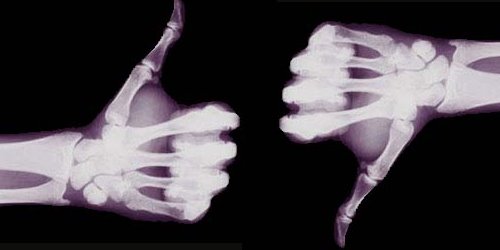A few Rads with your Reds?

Now this IS exciting news!
(as in 'highly excited particles' that is...)
I've been sitting on this information for some time now, but have finally confirmed a few rumors heard over the past several years (from sources close to the project) that a certain company is about to unveil a line of bottling equipment which irradiates wine bottles right after they are filled and corked to ensure sterility. Apparently the equipment manufacturer has been conducting trials over the past 7~8 years, studying how X-ray exposures of up to 1 kGray (~100,000 Rads) affect the wines stability, clarification and ageing potential.
Some nuggets of information from what they’ve found so far (at least what’s from credible sources):
- use of sulfur can be almost completely eliminated during ageing (only a minor amount is needed to prohibit oxidation)
- small units for use at bottling are available already
- larger units (which can treat several barrels of wine simultaneously) have been tested, and can irradiate the wine in situ to kill bacteria, molds and yeasts (including Brettanomyces!!) without the need to filter the wine [apparently the barrels are slid into the chamber, exposed, and then slide out the opposite side - I haven't witnessed one in use yet]
- units for tanks are not available due to the size of the average tank, but small tube & pipe units similar in design to heat exchangers are available, and wine is circulated through a shielded exposure ‘zone’, and then passes out the other side so that tanks can be treated in place by recirculating wine, or when wines are moved from tank to tank thru the unit
- longevity of fruit aromas and tannin seems to be slightly increased, but studies longer than 6 years are not yet complete
- higher exposure levels can reduce the need for bentonite fining and subsequent filtration, shortening the time needed between blending the wine and bottling (and therefore reducing the costs of producing the wines - probably meaning we'd all be paying less as well!)
- elimination/reduction of the use of sulfur can help reduce the number of cellar workers injured each year, as well as make the wines more friendly for sulfur sensitive individuals
- exposure levels can be adjusted for various activities and effects - including higher levels which can help reduce some excess tannins and astringency, and increase complexity (at the cost of some longevity)
- elimination of the use of animal products for fining (egg whites, casein [milk], isinglass [sturgeon bladder], etc) can make all treated wines organic & vegan friendly as well
I’ll post more when I can confirm some of the other items I’ve heard, and can publicly post the company's name, or where the trials have taken place. In the meantime, here is a link to an irradiation FAQ website:
Food Irradiation - A Quick Overview
Of the extra benefits being explored several really make me think; if you can leave the wine purer by using less fining agents, with less possibility of microbe contamination - and coupled with the use of screwcaps! - all that could lead to wines which are (almost) literally immortal, and continue to showcase their terroir for a hundred plus years!
The only drawback I can see is the problem of naming the wines... I mean is the world ready for, say, a Los Alamos Auslese, Manhattan Merlot, Cyclotron Chardonnay, an Oppenheimer Spätlese, Roentgen Red, or something like Strangelove Cellars Shiraz?
And with what tag lines? Something like "Our ageless wines in traditional styles can be enjoyed for generations!", or perhaps "Double-Cobalt medal winner at the 2045 Trinity Site wine fair!"...?
Will consumers embrace this new technology? Perhaps it will take a while...
Labels: terroir


2 Comments:
If you've killed everything in the wine -- by irradation, sterilization, addition of various chemicals, or whatever method you prefer...then can it really be said to age at all? I mean, it gets older but if it is dead it can't age.
Ageing in wines is not caused by micro-organisms, but rather by reactions between the compounds present when it is already in the bottle.
Changes by microbes after bottling are almost universally labelled as faults (the exception being Brettanomyces, which a few believe to be desireable).
E.g., many tannins and anthocyanins originally start life as glucosides (meaning they have a glucose molecule attached to them), and slowly lose that to become aglycones (meaning without glucose). Ethanol can cross react with many of the organic acids present to form other aromatic compounds (esters), which become part of the 'bouquet' of aged wines.
Microbes are responsible for compounds which smell like: mouse droppings/urine, wet dogs, vinegar, nail polish remover, horses, barnyards, chicken manure, sauerkraut, cheese, wet cardboard, etc. None of those are on my "good" list, and frankly I can't think of a producer worth their salt who'd want to have microbes in their wine responsible for such odors.
Cheers!
vini
Post a Comment
<< Home